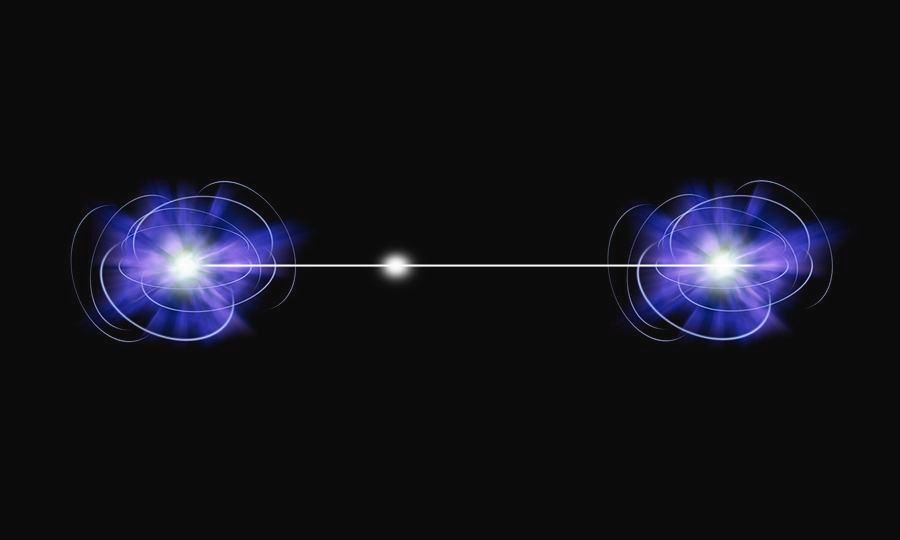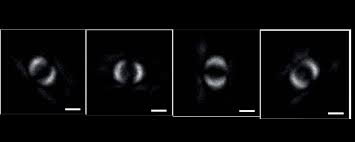Time, space and Quantum Entanglement
Entanglement is a correlation between different physical systems that establishes a relationship between their respective properties and is so substantial that it persists even when these systems, separated in space and time, no longer interact.

Time is linked to the perception of reality, which is why it has been the focus of many scientists’ studies for centuries and is central to many scientific theories. We ourselves find it difficult to question the concept of time because we experience it on a daily basis, i.e. we are immersed in time just as we are immersed in space.
Time at the Core of Science
In the last century, general relativity and quantum mechanics have brought the concept of time to the center of thought, but in a different way. In relativistic physics, time is related to space, and space-time is based on a four-dimensional model of the universe. In this case, gravity and motion determine the shape and structure of a time coordinate that is connected to space to form a single dimension, called space-time. In the laws of general relativity, the flow of time at a given point in space is affected by the presence of energy or energy flow. For this very reason, time should cease to exist in the vicinity of a black hole.
Uncertainty Principle
In quantum mechanics, however, time is considered different from any other observable property and is subject to the uncertainty principle. Heisenberg's Uncertainty Principle states that it is not possible to know the position and velocity of an electron at any instant simultaneously. Since information about the electron's motion can only be probabilistic:
"In the realm of reality, whose relations are formulated by the quantum theory, the laws of nature do not lead to a complete determination of what happens in space and time; rather, the occurrence (within the frequencies determined by the relations) is put back to the play of chance".
Measurability of Time
In practice, the more you go into the small, the more time and energy oscillate between unpredictable values. The physicist Carlo Rovelli goes so far as to say that time does not exist, but that there are physical variables that allow us to measure it. For physics, however, existence is not only an "operational" fact, but also the "measurability" of the observed elements. Measurement is a number that acquires meaning when we associate it with "objects" that have relationships with each other. Further questions about the real nature of these "objects" belong to metaphysics. Each particle (its position) has meaning and becomes observable only when placed in relation to another particle. Positions in space thus become relative, but time as a quantity also falls under this view of relations and is measurable in this context, so it exists.



Space, Motion and Time
Time is necessarily related to motion. Therefore, to understand what time is, one must define motion. In physics, motion is the property that allows a body to occupy different positions. Let us imagine a material point (P) and imagine that it occupies the position in space that we will call (A) and no other than (A). But (P) also occupies the position in space that we will call (B) and no other than (B). (A) and (B) are different. What makes it possible to overcome the contradiction between these three assumptions is that in certain cases (P) is in (A) or (B) at different values of the time variable. If (P) does not move, then the three assumptions contradict each other, so motion and time are related: P(t). The value of "in certain cases" in the definition is obvious, because what is said cannot be true in "all cases".
Schrodinger's equation
As defined by Feynman, quantum time is a new time associated with a new type of motion, independent of the determinate time to which we are accustomed, not directly measurable with any instrument, but perceived as instantaneous with respect to ordinary time, in any reference system considered. The time evolution of a physical system, in the generic representation K, in quantum mechanics, is described by Schrodinger's equation.
About the Entanglement
In the well-known "Page and Wootters (PaW) mechanism", named after the physicists who introduced it some 40 years ago, the correlation between the perception of the passage of time and the occupied space is formalized in an extraordinary phenomenon typical of and exclusive to quantum mechanics: entanglement. Entanglement is a correlation between different physical systems that establishes a relationship between their respective properties and is so substantial that it persists even when these systems, separated in space and time, no longer interact.
Insights
- Kip Thorne (2014). The Science of Interstellar.
- Kip Thorne (1994). Black Holes and Time Warps.
- Sean M. Carroll (2010). From Eternity to Here: The Quest for the Ultimate Theory of Time.
- Carroll, Sean (2019). Something Deeply Hidden: Quantum Worlds and the Emergence of Spacetime.
- Thomas V Marcella (2018). Quantum Entanglement and The Loss of Reality.
